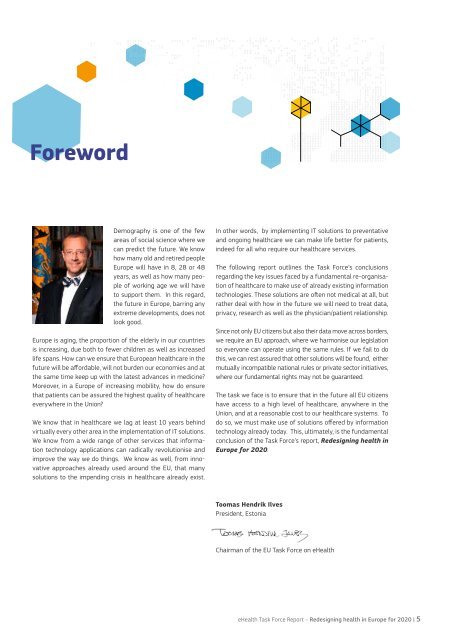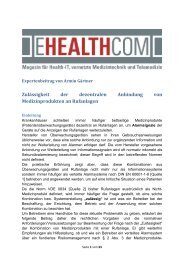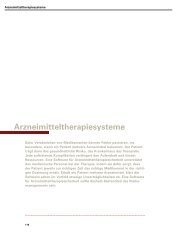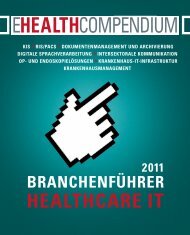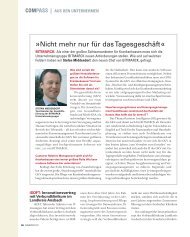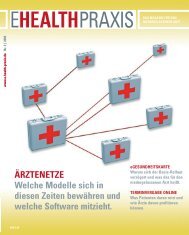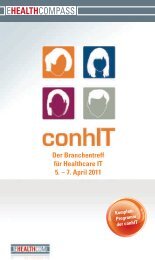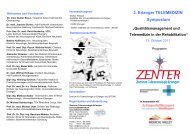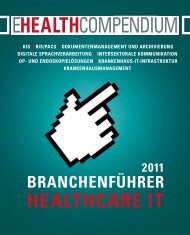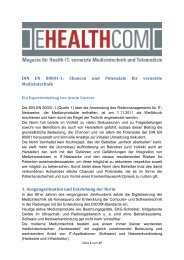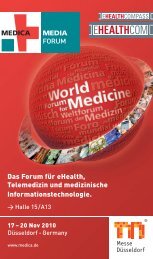eHealth Task Force Report - E-Health-Com
eHealth Task Force Report - E-Health-Com
eHealth Task Force Report - E-Health-Com
You also want an ePaper? Increase the reach of your titles
YUMPU automatically turns print PDFs into web optimized ePapers that Google loves.
Foreword<br />
Demography is one of the few<br />
areas of social science where we<br />
can predict the future. We know<br />
how many old and retired people<br />
Europe will have in 8, 28 or 48<br />
years, as well as how many people<br />
of working age we will have<br />
to support them. In this regard,<br />
the future in Europe, barring any<br />
extreme developments, does not<br />
look good.<br />
Europe is aging, the proportion of the elderly in our countries<br />
is increasing, due both to fewer children as well as increased<br />
life spans. How can we ensure that European healthcare in the<br />
future will be affordable, will not burden our economies and at<br />
the same time keep up with the latest advances in medicine?<br />
Moreover, in a Europe of increasing mobility, how do ensure<br />
that patients can be assured the highest quality of healthcare<br />
everywhere in the Union?<br />
We know that in healthcare we lag at least 10 years behind<br />
virtually every other area in the implementation of IT solutions.<br />
We know from a wide range of other services that information<br />
technology applications can radically revolutionise and<br />
improve the way we do things. We know as well, from innovative<br />
approaches already used around the EU, that many<br />
solutions to the impending crisis in healthcare already exist.<br />
In other words, by implementing IT solutions to preventative<br />
and ongoing healthcare we can make life better for patients,<br />
indeed for all who require our healthcare services.<br />
The following report outlines the <strong>Task</strong> <strong>Force</strong>’s conclusions<br />
regarding the key issues faced by a fundamental re-organisation<br />
of healthcare to make use of already existing information<br />
technologies. These solutions are often not medical at all, but<br />
rather deal with how in the future we will need to treat data,<br />
privacy, research as well as the physician/patient relationship.<br />
Since not only EU citizens but also their data move across borders,<br />
we require an EU approach, where we harmonise our legislation<br />
so everyone can operate using the same rules. If we fail to do<br />
this, we can rest assured that other solutions will be found, either<br />
mutually incompatible national rules or private sector initiatives,<br />
where our fundamental rights may not be guaranteed.<br />
The task we face is to ensure that in the future all EU citizens<br />
have access to a high level of healthcare, anywhere in the<br />
Union, and at a reasonable cost to our healthcare systems. To<br />
do so, we must make use of solutions offered by information<br />
technology already today. This, ultimately, is the fundamental<br />
conclusion of the <strong>Task</strong> <strong>Force</strong>’s report, Redesigning health in<br />
Europe for 2020.<br />
Toomas .Hendrik .Ilves<br />
President, Estonia<br />
Chairman of the EU <strong>Task</strong> <strong>Force</strong> on <strong>e<strong>Health</strong></strong><br />
<strong>e<strong>Health</strong></strong> <strong>Task</strong> <strong>Force</strong> <strong>Report</strong> – Redesigning health in Europe for 2020 | 5


